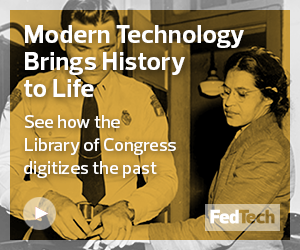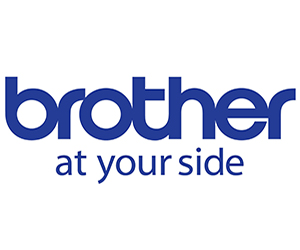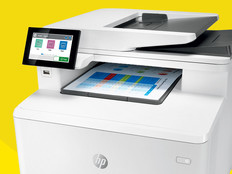FEDTECH: In an era where workers rely on paper and electronic documents, what kind of technology does an agency need to handle both kinds?
WALDINGER: We’re seeing a big shift from single-function devices to multifunction devices. Just having a printer in the office is not enough. People are acquiring more multifunctional devices because they want to be much, much more efficient. It’s not just having the device but making sure that the workers have a really great grasp of that technology, so the user interface needs to be very simple.
We can set up those workflows and have them be one-touch, taking human error completely out of the picture. With sensitive documents, particularly in the government space, there’s a lot of regulations about who has access to see those documents and who has access to print those documents. We need to keep an audit trail of those documents; they need to be archived. All this works in concert with some pretty robust software on the back end. The key is integration with that software, and that's what CDW and Brother can offer a federal agency.
FEDTECH: What other aspects of the workflow are affected by digital transformation related to printing?
WALDINGER: There will still be applications or executions within the environment where a single-function device still makes sense. For instance, if somebody just needs to scan documents, they need it on their desk. Having a dedicated scanner integrated with that workflow is important, because you may not want that user to be able to print anything. The same is true with printing. There may be a back-office application where all we’re doing is printing a contract, and that printer may be in a secure room that people can’t get into and that has biometric security. It’s about controlling the environment, and then putting the appropriate technology in that space.
DISCOVER: Agencies need to move to a world of digital records. See which solutions can help you get there.
FEDTECH: The federal government has special considerations in terms of security access, with classified and sensitive information. How does the current technology work in that kind of environment?
WALDINGER: That’s a big area for us, and it’s about customization. For instance, there will be environments where they’re so concerned about cybersecurity that they have to lock down that printer, that device, so that certain ports cannot be accessed. Certain people can only print to it; if someone else were to try and use it, they would have no rights at all. In the federal government, they use the Common Access Card and our products can support this integration through a third-party card reader. There are some other cases where our products have no hard drives. In the federal government, there is a big concern that information or a latent image will be retained in memory, and then a nefarious person could come in and hack that machine and extract that information. Our devices actually don’t retain that data, so they’re very attractive to the federal government.
FEDTECH: Does Brother do the work of setting up a system and then turn the work over to the agency, or is it more of an as-a-service type solution?
WALDINGER: Both. Obviously, the federal government agencies have IT departments that manage all the connected devices on their network. There would be first-level support if a printer goes down; they would be able to quickly look at the device and see what's going on — you have a jam in this area or you’re low on toner. Those types of things are usually managed by the different agencies. With Managed Print Services, the agency would outsource to a vendor like CDW, who would then need the proper ability to get into that network, manage the devices, see what’s going on with those specific devices. They can also dispatch the appropriate service people with the right part if a device goes down. That’s more of a proactive as-a-service approach. There’s definitely a trend in the federal government towards Managed Print Services.
FIND OUT MORE: See what CDW•G can do for federal government customers.
FEDTECH: Are there any particular solutions that seem to be popular amongst agencies?
BURNETT: Definitely, network technology. Having more connected devices gives them the greatest flexibility. The biggest thing we’re seeing is the shift to the multifunction devices and the standalone scheme devices because more and more documents in hard copy are being transformed into a digital document.
But one of the things that I think resonates with a lot of the IT professionals within the agencies — the printers are one of the last things a lot of these professionals are thinking about, and it’s a burden for them. You can take that burden away from them and make things easy with simple deployments. On the security aspect, many of them run with Security Information and Event Management tools, which monitor all the activity of the devices on the network. The Brother Workhorse models support reporting to these management tools.
It’s making that IT manager’s life easy. And the easier you make that, the more they’re going to be attracted to a particular product and solution.
WALDINGER: What they’re looking for are devices that can integrate with those back-end systems through some API call. They need to make sure that the printer can integrate with that. We partner with third-party software companies like Kofax that are integrated with those environments.
BURNETT: The other thing that Brother International, in conjunction with CDW, can bring is a lot of solutions and flexibility in a whole package to a particular government agency, then really streamline their operation and make them more efficient and more compliant to regulations. We can kind of check all the boxes with them.













